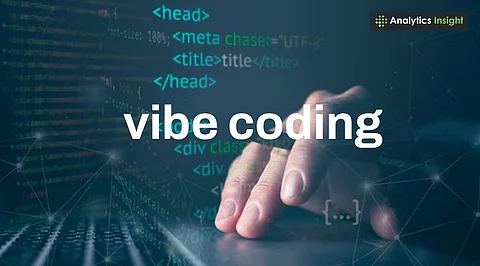

Vibe coding turns ideas into working code through plain‑language instructions, making software creation faster and more accessible.
It shifts the developer’s role from manual coding to guiding, reviewing, and refining generated code, blending creativity with oversight.
While it accelerates innovation, it also brings risks like security gaps and skill dilution, making human judgment essential.
Not long ago, coding required countless late nights spent writing logic line by line. Software development used to be a challenging craft that demanded years of experience, deep technical skills, and the patience to grapple with syntax.
However, artificial intelligence has reshaped this entire process through a new concept called vibe coding. Let’s explore what vibe coding is and how it is simplifying the complexities of programming.
Vibe coding, a term that was made famous by Andrej Karpathy in early 2025, is turning the act of building software into something far more conversational. Instead of crafting every detail line by line, a description of the desired outcome is given, and the system generates working code. The focus shifts to concepts rather than curly brackets and semicolons. Some see it as a creative leap forward. Others treat it as a threat to traditional craftsmanship.
Also Read: Best Programming Languages to Build AI Apps in 2025
Vibe coding bridges the gap between traditional programming and no‑code platforms. While the output remains genuine code, the workflow begins with instructions in plain language. Systems such as Replit’s Ghostwriter, Cursor, GitHub Copilot, and Claude translate these directions into an initial working build.
A prompt like “Create a dashboard with three charts, a filter bar, and export to CSV” can deliver a functional template within minutes. The result can then be modified, expanded, or clarified without manually writing every command. Rather than replacing developers, this model shifts attention toward directing, validating, and refining generated work.
Speed: Prototypes that took weeks now appear in hours.
Accessibility: People without a full technical background can turn ideas into working products.
Mindset shift: Development teams become “builders” in the broad sense, thinking about architecture, user experience, and outcomes rather than grinding through boilerplate.
For solo founders, the best vibe coding tools are transformative. You can launch, test, and iterate without having mastered an entire tech stack. For companies, it means faster internal tools, more experimentation, and shorter product cycles.
Lower entry barriers: Opens the door for creators from non‑technical backgrounds.
Faster iteration: Ideas can be tested before a heavy investment.
Creative expansion: Suggestions from the tool can spark features you hadn’t considered.
Interactive learning: Continuous feedback helps users pick up concepts along the way.
Code quality: If not reviewed, the output may contain bugs, run inefficiently, or lack proper security.
Security gaps: Fast‑built tools sometimes skip essential safeguards.
Overreliance: Without understanding the logic, you can’t maintain or debug it effectively.
Shadow IT: Unsupervised builds in corporate settings can create compliance headaches.
The smart approach is to treat vibe coding tools as collaborators. Let the system take on most of the work while human oversight, testing, and governance stay central.
The role will tilt toward:
Designing systems and architecture.
Reviewing generated code for security and performance.
Directing the flow of user experience.
Maintaining ethical and inclusive standards.
Think of it less like a factory worker being replaced and more like a director stepping away from the camera to shape the whole production.
Hybrid platforms: Higher integration with low‑code and design tools.
Solo app builders: Individuals launching end‑to‑end products on their own.
New training models: Teaching intent communication, debugging, and tool oversight.
Ethics and security focus: Enhanced rules addressing bias, transparency, and data security.
Seamless IDE integration: Generation, testing, and optimization in a single workspace.
Also Read: Best Programming Languages for Cybersecurity in 2025
For all the hand‑wringing about job loss, vibe coding is better seen as an expansion. It invites more voices into software creation, speeds innovation, and shifts the focus from rote syntax to problem-solving.
Those who unite sharp vision with wise guidance over these tools will lead the future. This is not about losing control but about shaping it into smarter, faster, and more collaborative creation. This concept might just lead to a future worth coding for.
